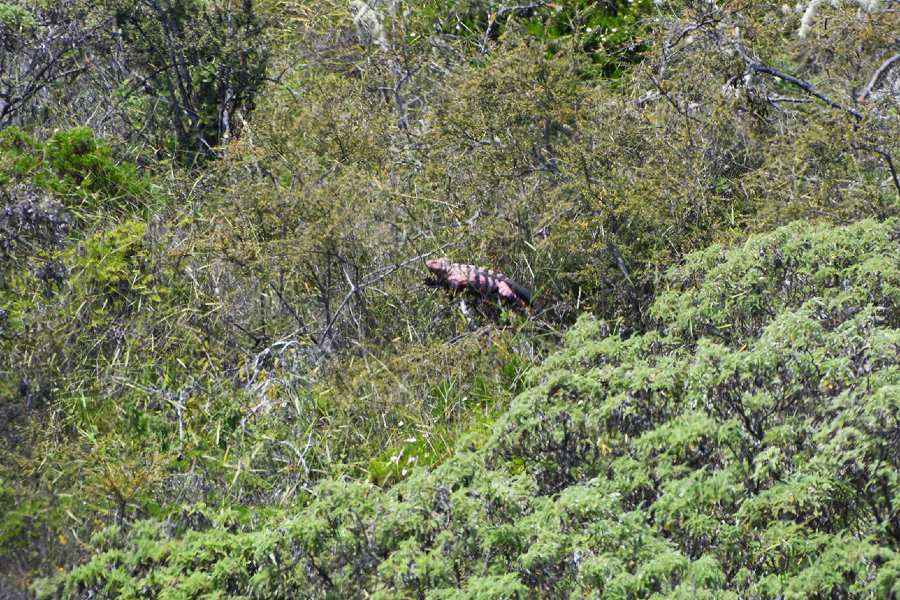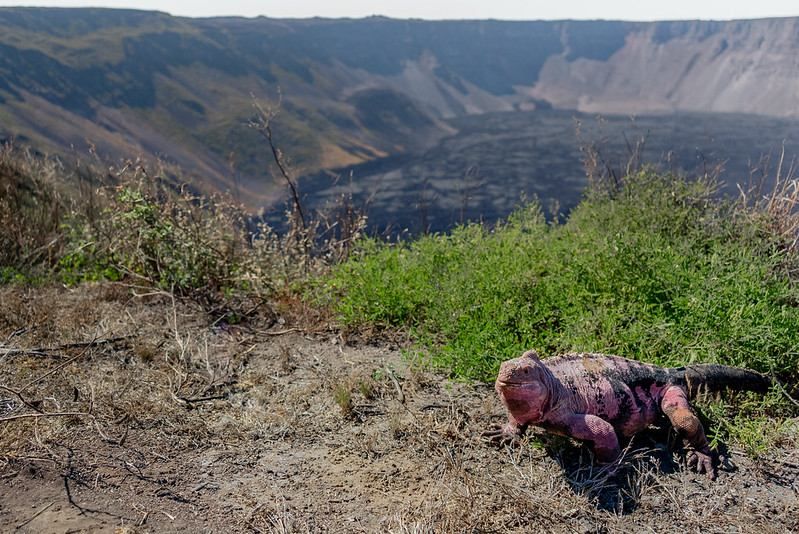
In concluding their expedition to Wolf Volcano on Isabela Island in the Galápagos, scientists have finished the first survey of the pink land iguana, a Critically Endangered species that lives nowhere else on Earth.
The survey used camera traps and involved 30 scientists spreading out over nearly 1,000 acres of the “most inhospitable places in Galápagos,” positively identifying 53 adult pink land iguanas, but no juveniles.
The effort which took place through early-to-mid August was led by Conservation Manager Jorge Carrión and Conservation Director Washington Tapia at the Galápagos Conservancy, who have overseen some remarkable close shaves at their hugely successful Giant Tortoise Restoration Initiative.
The pair recently reported on their expedition, and how with a little data, and a little hope, they believe they can rescue this quite recently-discovered species from the brink on which it was found teetering over.
“They are iconic as much for being recently discovered and limited to a small geographic area, as for the inherent challenges of managing the future of an animal of which we know very little about,” Carrión wrote, at the Conservancy’s website.
The challenges of conserving them are partly the terrain, as Carrión details, for Wolf Volcano is as unwelcoming as a wolf or a volcano. The iguanas nest at 5,600 feet above sea level, where there is little shade, and the temperatures can rise to 100 °F in the air and 160 °F at the level of the ground. At night however, the temperature plummets to 50 °F with a strong, constant and freezing wind.
The steep, mountainous ground is littered with cacti, and there are more ticks on Isabella than any other island. Finally, the iguanas can easily bite a finger off if they get the opportunity, so handling them is kept to a minimum.
“During the expedition, we documented never-before-seen behavior such as the symbiotic relationship with Darwin’s finches, which feed on parasites on the iguana’s body, and the unusual sight of an iguana seeking out the sun on a tree branch in an area where the sunlight couldn’t penetrate the dense undergrowth.”

The last juvenile was spotted in 2014, just five years after the species was first officially described as different from both the normal, and yellow land iguanas of the famous islands.
Using the mark and recapture method of analysis, the Conservancy believes that 211 individuals may remain on Isabella.

Iguana experts from around the world, at the behest of the Galápagos National Park Directorate, arrived for a brainstorming event on the data gathered during the expedition in late August. With their help, the Directorate and the Conservancy hope to craft the first action plan for saving the pink iguana.
(WATCH the video below.)
KEEP Good News From Becoming Endangered; Share This Story…




















